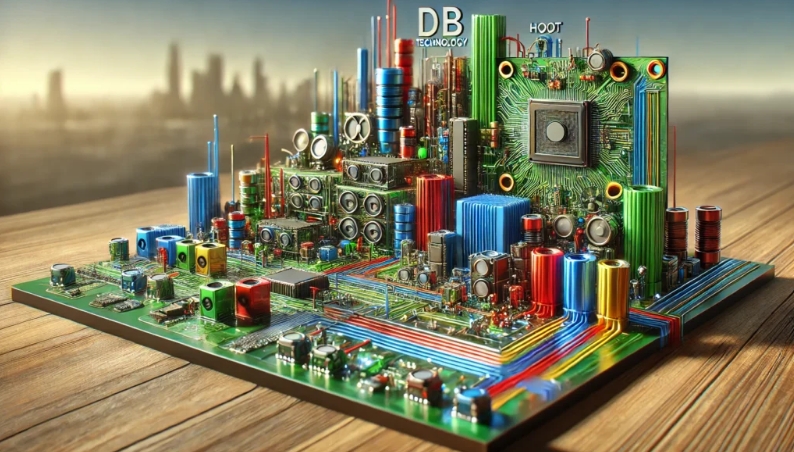Hoot circuit boards are specialized printed circuit boards (PCBs) designed for specific functionalities in electronic devices. They are known for their compact size and high efficiency, making them ideal for various applications. The term "hoot" refers to their unique design features that optimize performance, reduce power consumption, and enhance signal integrity.

Design and ConstructionHoot circuit boards are typically made using high-quality materials like FR-4 or Rogers substrates. These materials ensure durability and performance. The design often incorporates multiple layers, allowing for more complex circuitry in a smaller footprint.
Signal IntegrityOne of the primary benefits of DB technology hoot circuit boards is their enhanced signal integrity. The layout minimizes crosstalk and electromagnetic interference (EMI), which is essential for high-frequency applications. Engineers often utilize differential signaling techniques to further improve performance.
Thermal ManagementEffective thermal management is critical in circuit board design. Hoot circuit boards often include thermal vias and heat sinks to dissipate heat efficiently, preventing damage and ensuring longevity.
Component PlacementThe strategic placement of components on hoot circuit boards is crucial. By optimizing the layout, engineers can minimize the length of signal paths, which reduces latency and improves overall performance.
Testing and Quality AssuranceBefore deployment, hoot circuit boards undergo rigorous testing, including thermal cycling and electrical tests. This ensures that they meet industry standards and perform reliably in real-world conditions.
Consumer ElectronicsHoot circuit boards are widely used in consumer electronics, such as smartphones, tablets, and laptops. Their compact design allows for more features in smaller devices without sacrificing performance.
Automotive IndustryIn the automotive sector, hoot circuit boards are essential for advanced driver-assistance systems (ADAS), infotainment systems, and electric vehicles (EVs). Their reliability and efficiency are crucial for the safety and functionality of modern vehicles.
TelecommunicationsThe telecommunications industry benefits significantly from hoot circuit boards, particularly in base stations and networking equipment. Their ability to handle high data rates while maintaining signal integrity makes them ideal for this sector.
Medical DevicesIn the medical field, hoot circuit boards are used in diagnostic equipment, wearable health monitors, and imaging systems. Their reliability and compact design are vital for portable and accurate medical devices.
Industrial ApplicationsHoot circuit boards find applications in industrial automation, robotics, and control systems. Their durability and performance in harsh environments make them suitable for these demanding applications.
While hoot circuit boards are designed for longevity, there may come a time when circuit board replacement is necessary. Factors such as wear and tear, technological upgrades, or damage can lead to the need for a replacement. Here are some considerations:
Identifying the Need for ReplacementSigns that a circuit board may need replacement include frequent malfunctions, inconsistent performance, or physical damage. Regular maintenance checks can help identify issues early.
Choosing a ReplacementWhen replacing a hoot circuit board, it’s crucial to choose one that meets the specifications of the original. This ensures compatibility and performance.
InstallationProper installation of the replacement board is vital. Following manufacturer guidelines and using the right tools can prevent damage during installation.
Testing After ReplacementOnce a new circuit board is installed, thorough testing is essential to ensure it operates correctly. This includes checking for signal integrity and verifying all connections.
DB technology hoot circuit boards represent a significant advancement in electronic design, offering enhanced performance, reliability, and compactness. Their applications span various industries, from consumer electronics to automotive and medical devices. As technology continues to evolve, hoot circuit boards will undoubtedly play a pivotal role in the future of electronic engineering.
What is the primary advantage of using hoot circuit boards?
The main advantage is their enhanced signal integrity and compact design, which improve overall performance in various applications.
Can hoot circuit boards be customized for specific needs?
Yes, hoot circuit boards can be designed and tailored to meet specific requirements, ensuring optimal functionality for various applications.
How often should circuit boards be inspected or replaced?
Regular inspections should be conducted, and replacement is recommended when signs of wear, damage, or performance issues arise.
Are hoot circuit boards more expensive than traditional circuit boards?
While they may have a higher initial cost due to their specialized design, their performance and reliability can lead to cost savings in the long run.
What industries utilize DB technology hoot circuit boards?
Industries such as consumer electronics, automotive, telecommunications, medical devices, and industrial automation commonly use hoot circuit boards.